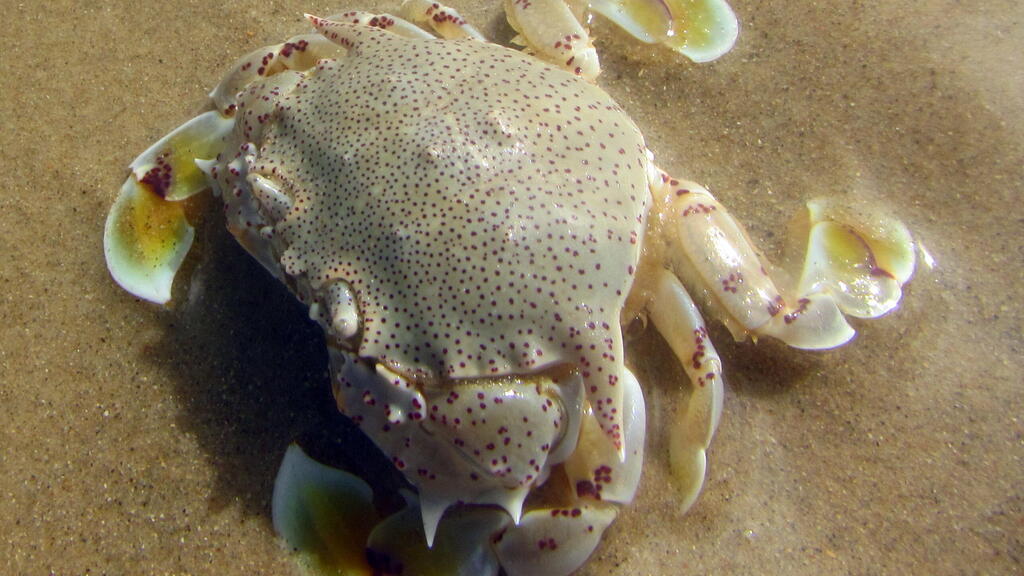Getting your Trinity Audio player ready...
The Society for the Protection of Nature in Israel was urging citizens to report sightings of an invasive crab species along Israel's coasts, known as "Matuta victor" or the Common Moon Crab. Originating from the region between the Pacific and Indian Oceans, the species was first sighted in the eastern Mediterranean in 2012 in Haifa Bay and has since rapidly spread along Israel's shores.
Matuta Victor
(Video: Dr. Shay Shafir)
Researchers believe activities in Haifa Bay may have contributed to its spread, although definitive evidence is lacking. The crab has also made its way to neighboring regions, including Lebanon, Turkey, Greece, and Cyprus. "We are trying to create an updated map of its spread with the help of the public," said Alon Rothschild, Director of Biodiversity at the Society for the Protection of Nature in Israel.
"The crab is known for its aggressive behavior and omnivorous predation, including instances of cannibalism," explained Bar Sternbach, coordinator of SeaWatch and marine projects at the Society for the Protection of Nature in Israel. "It competes with local species for food and may drive them out. The crab feeds on clams, other crabs, and fish, creating significant predation pressure on native species. Its presence can disrupt local food chains, alter the composition and structure of populations, and affect the balance of the entire ecosystem. Pollution and infrastructure projects along Israel's coasts have created favorable conditions for the invasive crab to thrive, as they disrupt local habitats and harm biodiversity, giving invasive species like Matuta victor an advantage."
In recent years, citizen science projects combining researchers and the general public have enabled the collection of information on a wide range of animal species, contributing to research and nature conservation. The SeaWatch app, launched by the Society for the Protection of Nature in Israel in 2015, has been downloaded by over 10,000 people.
The app allows for reporting on various categories of hazards, including invasive species. "The advantage of this species is that it is easy to see," says Rothschild. "Even if you are wading in shallow water, it is very easy to identify. That’s why we thought it would be suitable for a citizen science project. We cannot yet say the extent of the impact on local species. But in nature, there is no vacuum. When a species enters, especially in large numbers, we assume it disrupts the balance."
So how do you identify Matuta victor, the Common Moon Crab? Professor Bella Galil from the Steinhardt Museum of Natural History in Tel Aviv noted that there are no similar species in the Mediterranean in Israel, and it has distinctive and easily recognizable features: a rounded and convex carapace with six tubercles in the center and a prominent lobe at the front, sides characterized by long, sharp spines, massive and armored claws with serrated edges, the carapace and claws covered in tiny red spots, and legs stained yellow and adorned with red spots.
Sternbach mentioned that several reports of the invasive crab have already been received through the app, from Ashdod to Hadera.
It is estimated that the crab arrived via the Suez Canal, possibly on one of the ships that eventually reached Haifa Bay. The Society for the Protection of Nature notes that since the opening of the Suez Canal in 1869, many tropical species have invaded and established themselves in the Mediterranean. The passage occurs through the canal's waters or on ships, in their ballast water containing individuals or larvae of these species. This phenomenon is known as "Lessepsian migration." Estimates of the number of alien species established in the Mediterranean range between 600 and 700 species, including the more familiar wandering jellyfish to the Israeli public.






